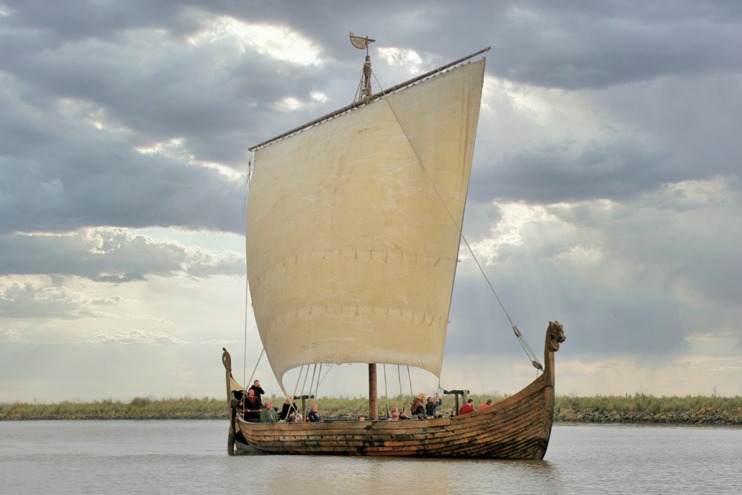The Musée du Débarquement d’Arromanches is the very first museum dedicated to the commemoration of June 6, 1944, and the Battle of Normandy. Located directly opposite the remains of the Mulberry B artificial harbor, the museum offers a spectacular immersion into the history of D-Day and the technological feat behind the construction of the prefabricated harbors that enabled the Allies to resupply their troops from the very first day of the landings.
Evenement
Discovering Normandy’s must-see cultural sites
Normandy is a region rich in historical and artistic heritage. From medieval times to the 20th century, its museums and monuments tell fascinating stories. Here is an overview of the main cultural sites to visit.
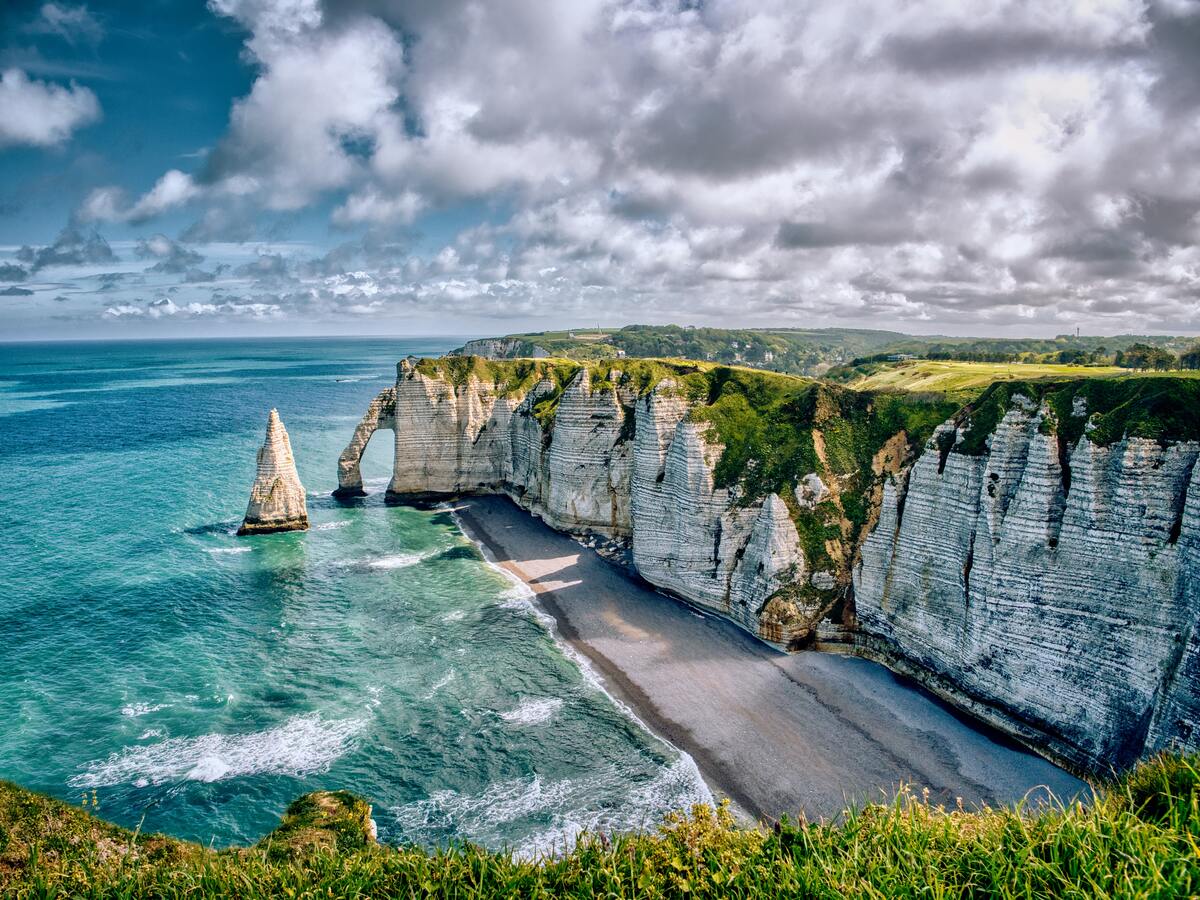
Rouen Museum of Fine Arts
The Musée des Beaux-Arts de Rouen is one of the most important museums in France outside Paris, renowned for the richness and diversity of its collections. Founded in 1801 by the Chaptal decree, its first public collections date back to the French Revolution. Today, it houses more than 8,000 works covering painting, sculpture, and graphic arts from the 15th to the 20th century.
The museum is particularly renowned for its Impressionist collection — the second largest in France after the Musée d’Orsay in Paris — featuring major works by Monet (including the Rouen Cathedral series), Pissarro, Sisley, Renoir, and Caillebotte. Much of this collection was made possible through the François Depeaux donation in 1909.
Among the masterpieces on display are paintings by Caravaggio, Rubens, Velázquez, Poussin, Modigliani, Gérard David, Ingres, Fragonard, and a rare collection of Russian icons dating from the 16th to the early 19th century. The museum’s drawing cabinet preserves more than 8,000 pieces, illustrating the vitality of graphic art from the Renaissance to the 20th century.
The museum building, designed by architect Louis Sauvageot, was inaugurated at the end of the 19th century and completely renovated by Andrée Putman in 1994, restoring the architectural quality of its spaces and volumes. Located opposite the Square Verdrel in Rouen’s historic center, it offers thematic tours (masterpieces, Impressionism) free of charge, in keeping with the city’s cultural policy.
The museum regularly hosts international temporary exhibitions and offers innovative cultural programs (guided tours, online educational materials, digital tours via QR codes and mobile app). Admission to the permanent collections is free.
Opening hours: 10 a.m. to 6 p.m., every day except Tuesday and major public holidays.
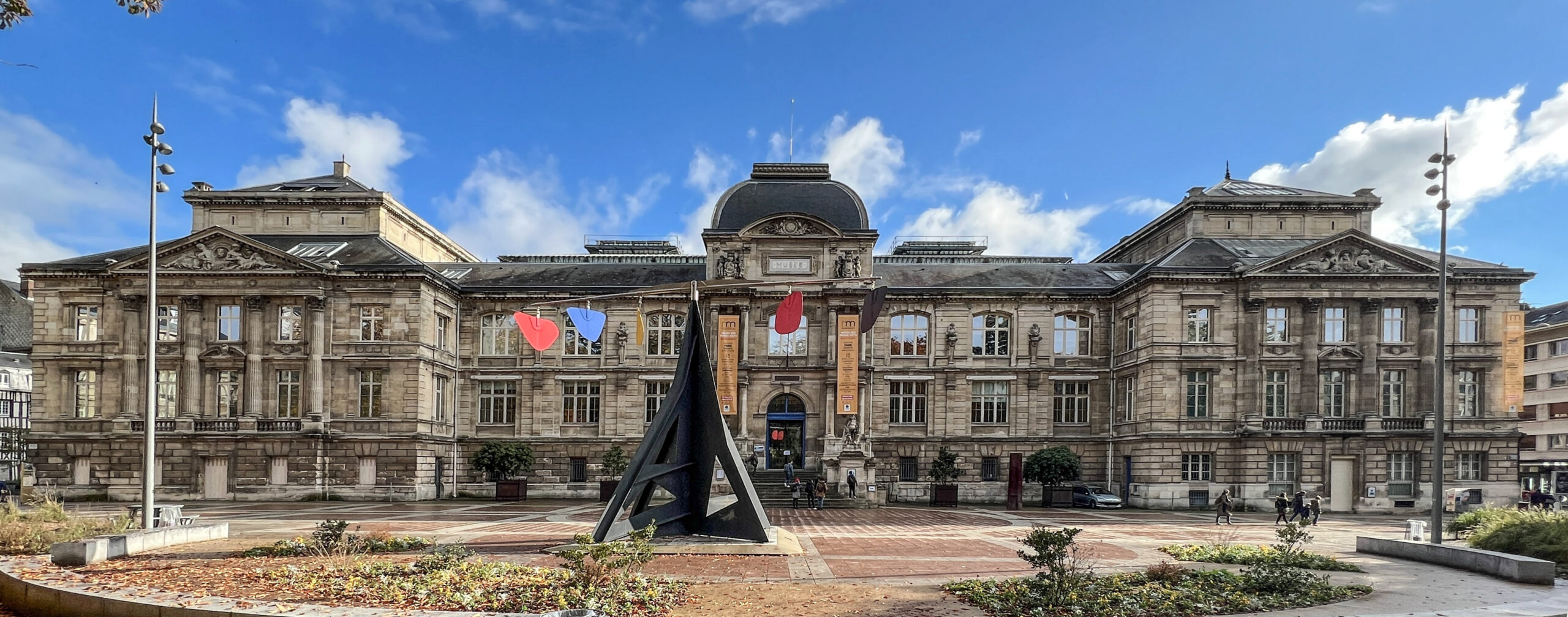
Caen Memorial
The Mémorial de Caen is a major museum dedicated to the history of the 20th century, located on the Espace Général Eisenhower in Caen. It stands out for its focus on peace and reconciliation, exploring key historical themes such as World War II, the Normandy Landings, the Holocaust, the Cold War, and the building of modern Europe. The site also includes the former bunker of General Wilhelm Richter, an authentic underground witness to the Battle of Normandy.
Its permanent exhibition presents a chronological and thematic narrative of history, featuring numerous objects and original documents (more than 8,000 artifacts and 100,000 documents), with a strong emphasis on the story of the Holocaust. Since 2019, an ultra-modern immersive room has allowed visitors to relive the major turning points of European history through a 360° film experience.
The building, designed by architect Jacques Millet and inaugurated on June 6, 1988, carries a powerful symbolism: fracture and reconstruction, reflecting the story of Normandy — scarred and then liberated. Three memorial gardens (Canadian, American, and British) pay tribute to the Allied forces along the Vallée du Mémorial. The main entrance bears a poetic inscription by Paul Dorey: “La douleur m’a brisée, la fraternité m’a relevée, de ma blessure a jailli un fleuve de liberté” — “Pain broke me, brotherhood raised me up, from my wound sprang a river of freedom.”
This family-friendly museum offers on-site dining, free parking, and a welcoming environment for all audiences, with a strong educational and civic mission.
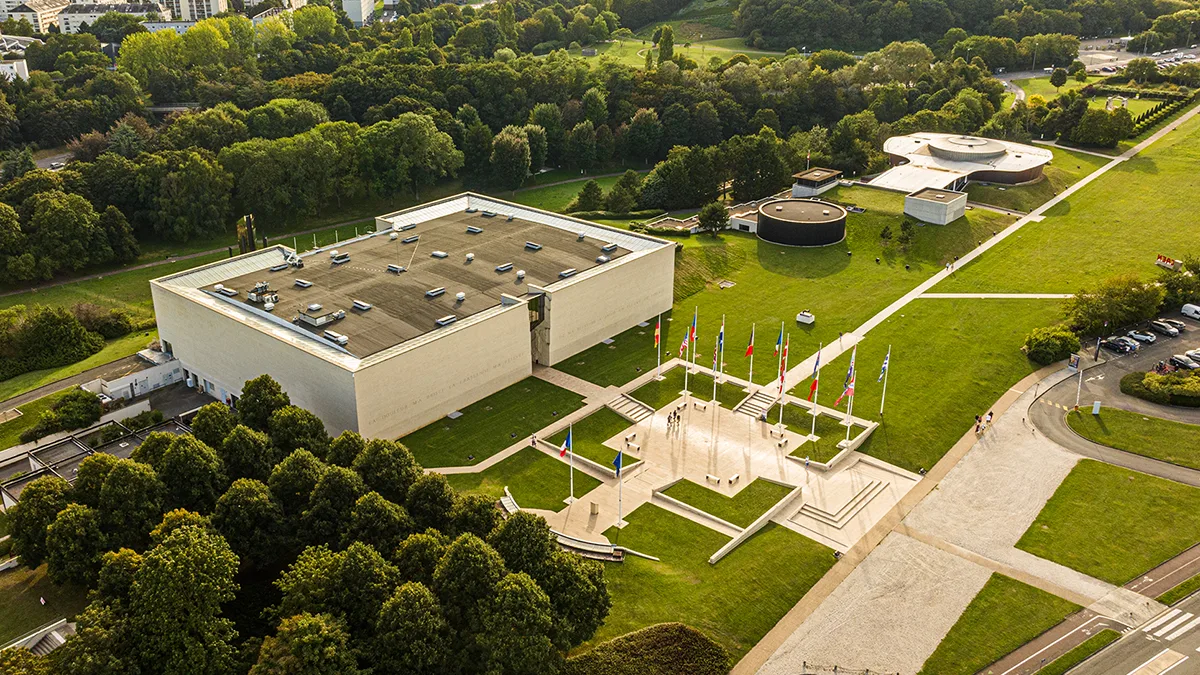
Arromanches Landing Museum
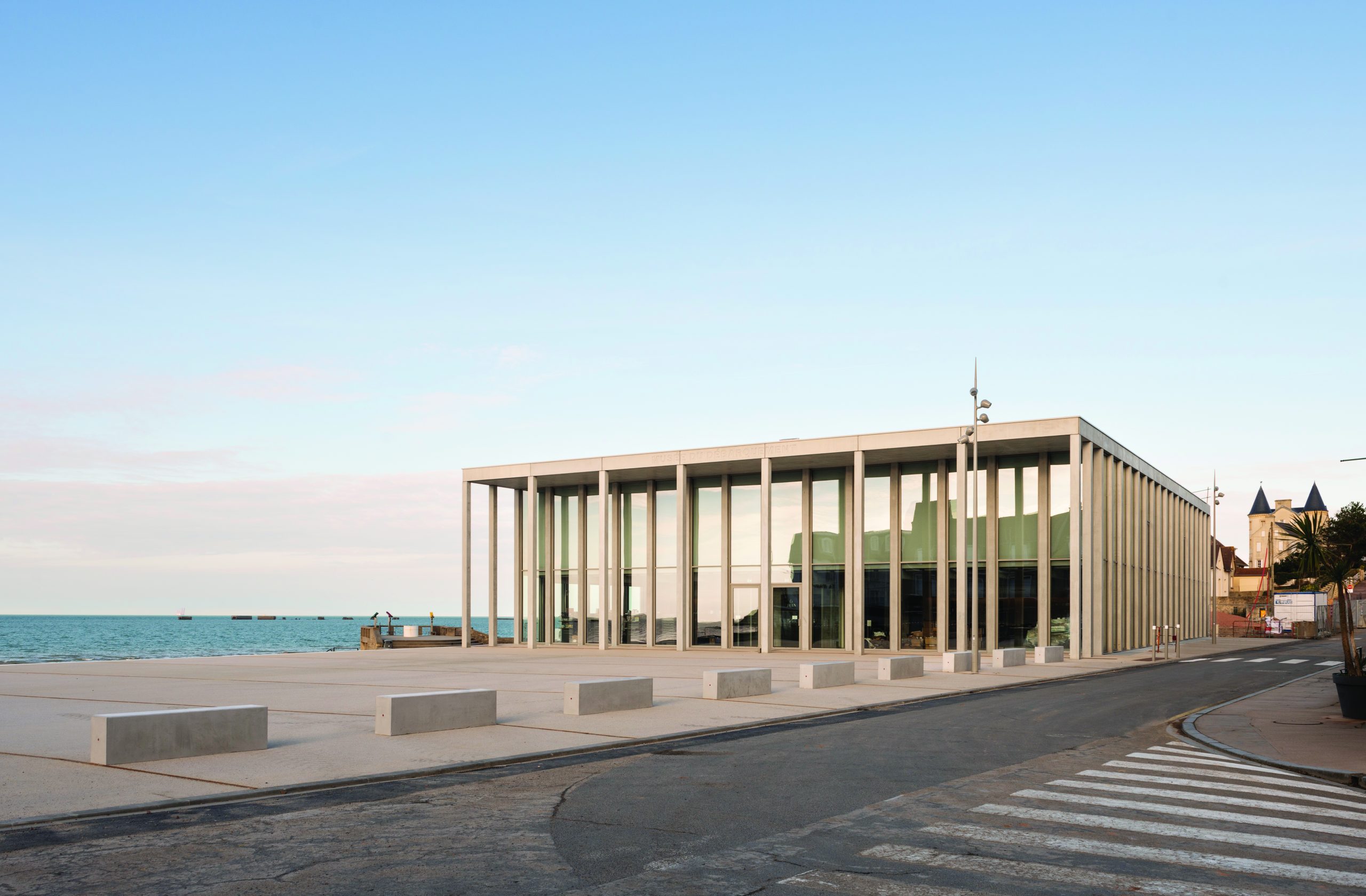
Joan of Arc Museum (Rouen)
The Historial Jeanne d’Arc is the largest French site dedicated to the memory of Joan of Arc, located in the archiepiscopal palace at the heart of Rouen’s historic center. This site carries deep symbolic significance, as it is here that both her condemnation trial in 1431 and her rehabilitation trial in 1456 took place.
The visit is structured around two complementary routes:
-The Epic of Joan of Arc: an immersive multimedia journey of about 1 hour and 15 minutes, in which major 15th-century witnesses (recreated through holograms and projections) guide visitors through the key events of the life and trial of the “Maid of Orléans”.
-The Mythothèque: this second space explores how the myth of Joan of Arc was constructed through art, the Republic, the Church, and historians. The route includes archival documents, films, cabinets of curiosities, and works of art inspired by Joan of Arc.
The museum is renowned for its innovative scenography: sound and light projections, mapping on the centuries-old palace walls, and access to rooms classified as historical monuments. Its activities, adapted for all audiences (children from 3 years old, school groups, families), allow visitors to experience the story of Joan of Arc in a new way.
This site is a key reference for understanding both the history and the myth of Joan of Arc, thanks to its immersive and educational approach, all set within one of Rouen’s most prestigious medieval monuments.
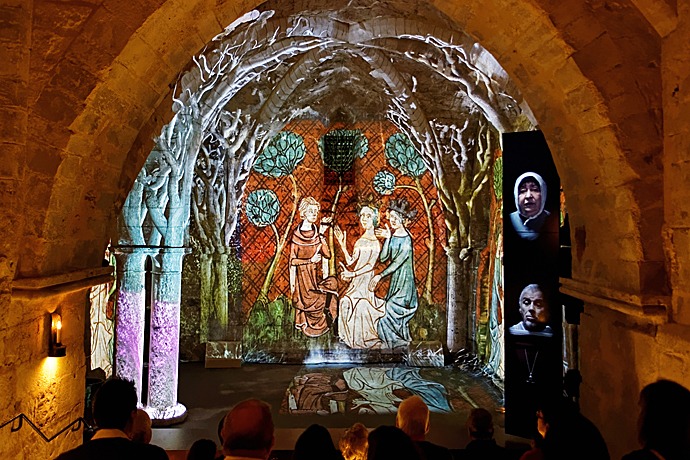
Bayeux Tapestry
The Bayeux Tapestry is an exceptional 11th-century textile work, listed on UNESCO’s Memory of the Worldregister. It measures nearly 70 meters long and 50 centimeters high and is actually a wool embroidery on linen, likely created in an English workshop shortly after the Norman conquest of England by William the Conqueror.
The work was commissioned by Bishop Odo, William’s half-brother, to adorn the new Bayeux Cathedral, inaugurated in 1077. It recounts the history of the English throne from the end of Edward the Confessor’s reign to William’s victory at the Battle of Hastings in 1066: the oath of Harold, his perjury, the Norman expedition, legendary scenes, and the coronation at Westminster.
The central frieze is framed by borders illustrating real and imaginary animals, everyday scenes, and even mythological references or fables, such as “The Crow and the Fox” inspired by Aesop. The embroidered Latin inscriptions comment on the main actions and help follow the story through the images.
Exhibited at the Centre Guillaume Le Conquérant in Bayeux, it is preserved under optimal climate and light conditions, remaining a major witness to medieval culture, Romanesque art, and the millennia-old link between Normandy and England.
The Bayeux Tapestry, a 70-meter medieval masterpiece, is currently at the center of a heated controversy in France. While it is scheduled to be loaned to the British Museum in London from September 2026 to June 2027, conservation experts have expressed concerns about its fragility and the risks associated with transport. Despite these warnings, the Élysée Palace assures that the move is technically feasible and safe.
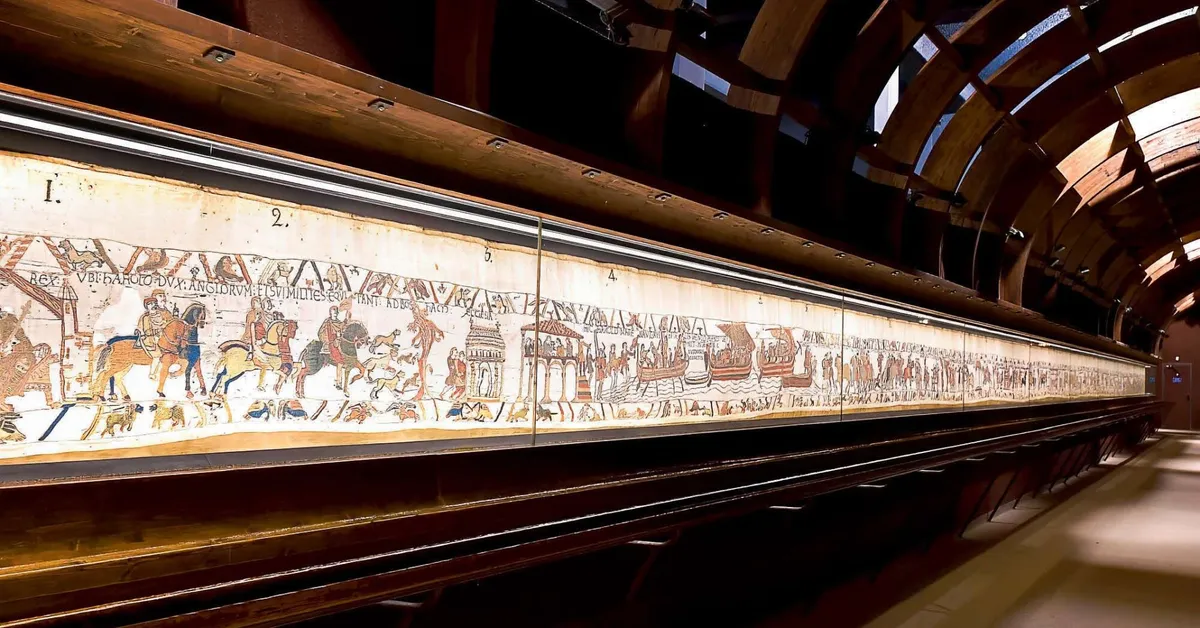
Castle of William the Conqueror (Falaise)
The Château de Guillaume le Conquérant, located in Falaise, is an iconic example of Anglo-Norman medieval architecture. It is best known as the birthplace of William the Conqueror around 1027, future Duke of Normandy and King of England after his victory in 1066.
The castle notably features a large square keep built around 1123 by Henry I Beauclerc, William’s son. This keep-palace, typical of Anglo-Norman architecture, combines residential and defensive functions with a massive structureincluding multiple floors and secured access.
Strategically located, the castle controlled the fortified town of Falaise and served as an important ducal and royal residence for the Dukes of Normandy and Kings of England, including Richard the Lionheart and John Lackland. The fortress includes extensive walls, a bailey, and ancillary buildings such as a chapel dedicated to Saint Nicholas built under Henry I.
Today, the castle is a major tourist site, featuring immersive exhibitions with films and 3D images that recreate medieval life in the fortress and illustrate the epic of William the Conqueror. It also offers sweeping panoramic views of the town of Falaise.
The castle bears witness to a long history of Anglo-Norman power and medieval conflicts, as well as a foundational architectural tradition for European castles of the future.
Address: Place Guillaume-le-Conquérant, 14700 Falaise.
Opening hours, guided tours, and multimedia experiences vary by season.
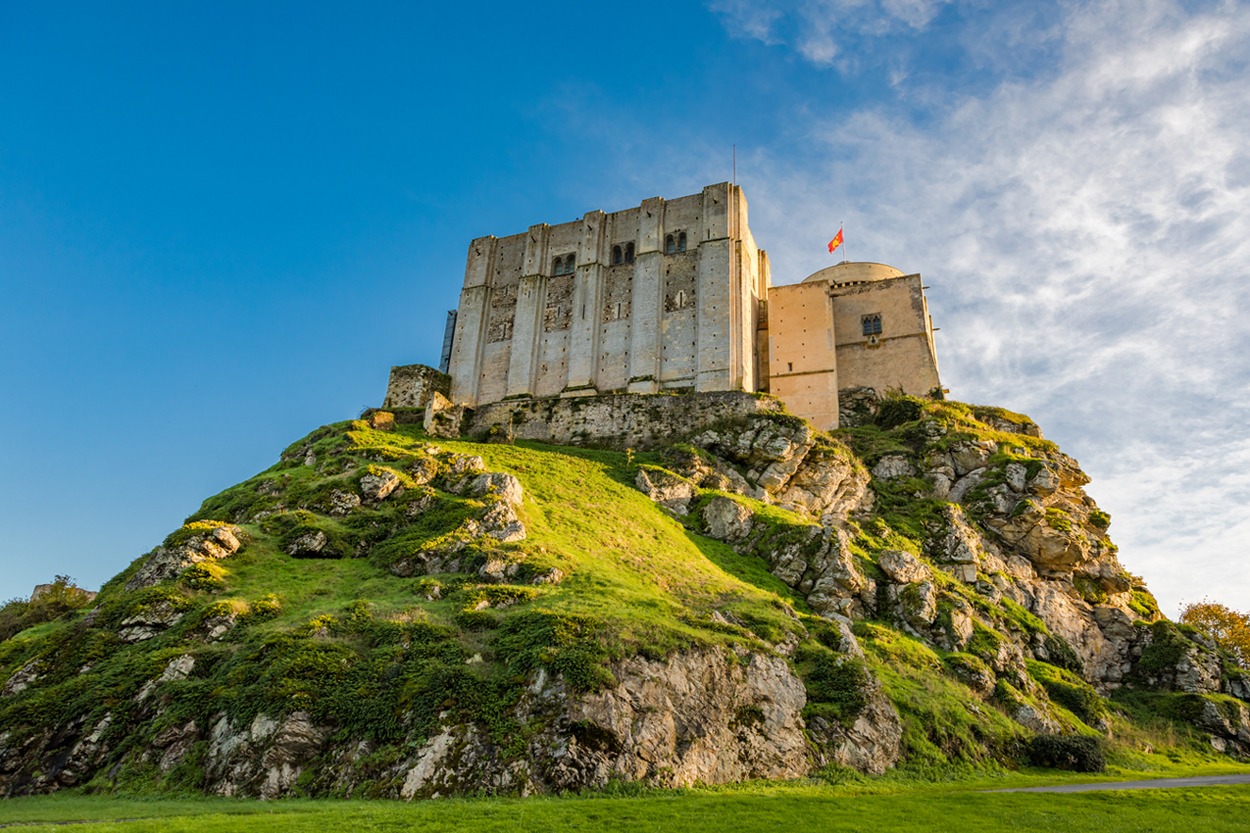
Millennium Sites (Caen and surrounding area)
In 2025, Caen celebrates its 1,000th anniversary with a rich program of events and cultural activities under the label Millénaire de Caen 2025.
The main emblematic sites involved in the celebration include:
-Château de Caen: One of Europe’s largest medieval fortresses, which reopened in March 2025 after two years of restoration. It hosts immersive shows, projections on its ramparts, and historical animations.
-Abbaye aux Dames: A prime example of Norman religious heritage founded by Matilda of Flanders, wife of William the Conqueror. Its park has been transformed into a reconstructed medieval village for the festivities.
-Abbaye aux Hommes: Founded by William the Conqueror, this site contributes to the city’s historical and cultural prominence.
-University of Caen: Organizes events combining scientific rigor and engaging activities centered on the history of Caen.
-City center and quays: Parades, illuminated trails, and nautical activities are scheduled at various points along the port and city center, highlighting both historical and contemporary memory of Caen.
-Exhibitions and cultural activities: Engravings, performances, and historical reenactments immerse visitors in a thousand years of life in Caen, with particular attention to the Orne and Odon rivers and districts rebuilt after World War II.
This series of events and sites offers a unique opportunity to immerse oneself in a millennium of Norman history in Caen and its surroundings, combining architectural heritage, living culture, and popular festivities.
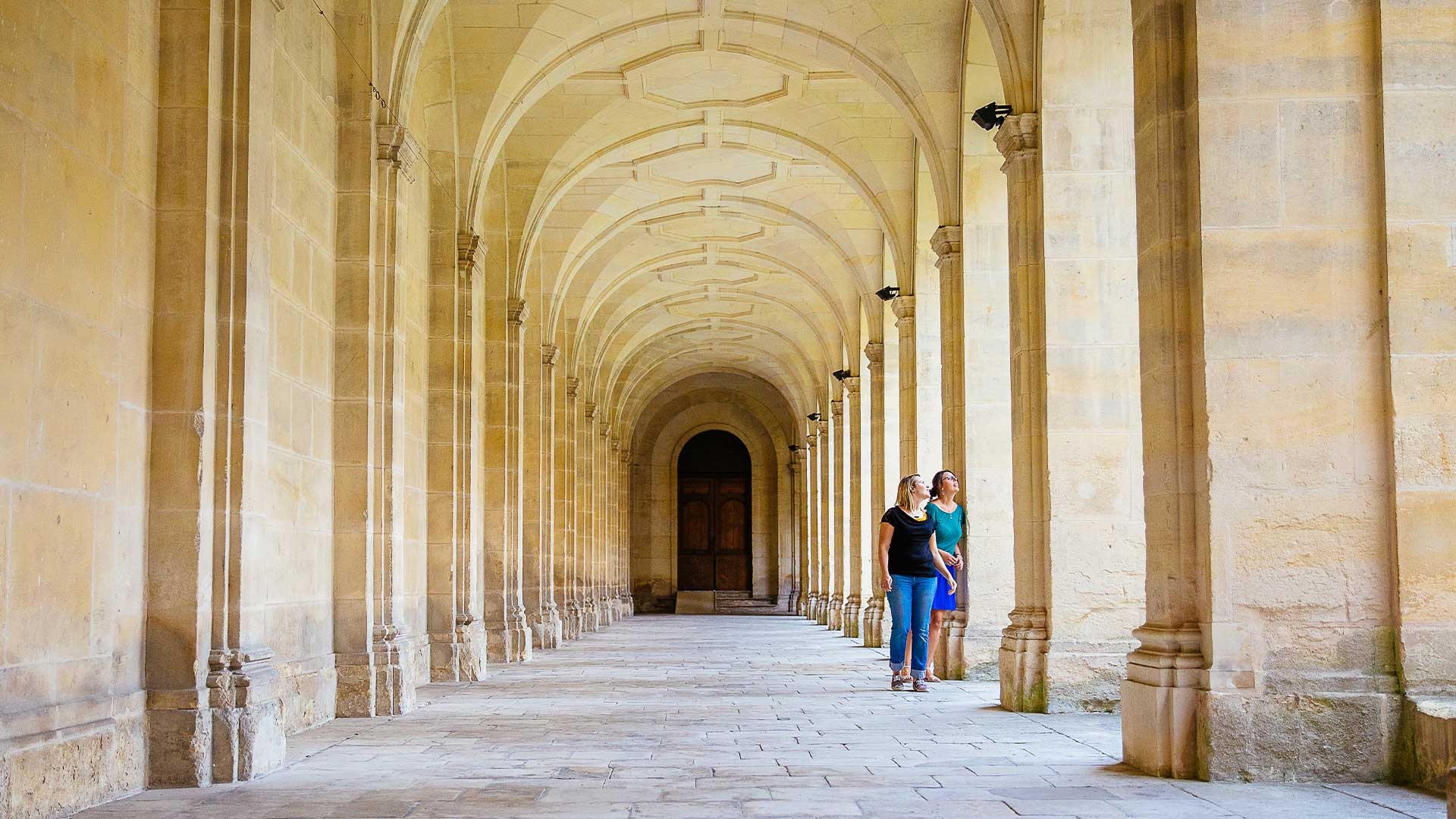
The Millennium of William the Conqueror
The Millennium of William the Conqueror in 2027 is a major event organized by the Normandy Region to celebrate the 1,000th anniversary of William’s birth in 1027 in Falaise. This commemoration is part of a “European Year of the Normans”, celebrating the Norman people and their heritage across Europe. Numerous cultural, scientific, and festive initiatives are planned to highlight the Norman influence in regions ranging from the United Kingdom to Scandinavia, Southern Italy, and Flanders.
Key highlights include an immersive exhibition on the great Norman epics and the creation of a monumental tapestry depicting the missing scene of William’s coronation at Westminster Abbey, made by the artist Hélène Delprat. Other events feature a contemporary art trail across Europe, a large gathering of Viking ships, monumental digital projections, and historical and cultural conferences, including “The Battle Conference on Anglo-Norman Studies”.
The various regions involved, including Normandy, are preparing diverse projects, ranging from museum openings or renovations to interactive tourist events, such as a story-driven quest tracing William the Conqueror’s legacy across Normandy and Europe. A television series produced by CBS and BBC, titled “King and Conqueror”, is also in preparation to depict the war for the English throne between William and Harold.
This millennium celebration aims to foster innovative and sustainable European cooperation, promoting both historical heritage and contemporary issues related to culture, society, and the environment. The event promises a unique opportunity to rediscover Normandy and its impact on European history, while embracing modernity and contemporary artistic creation.
